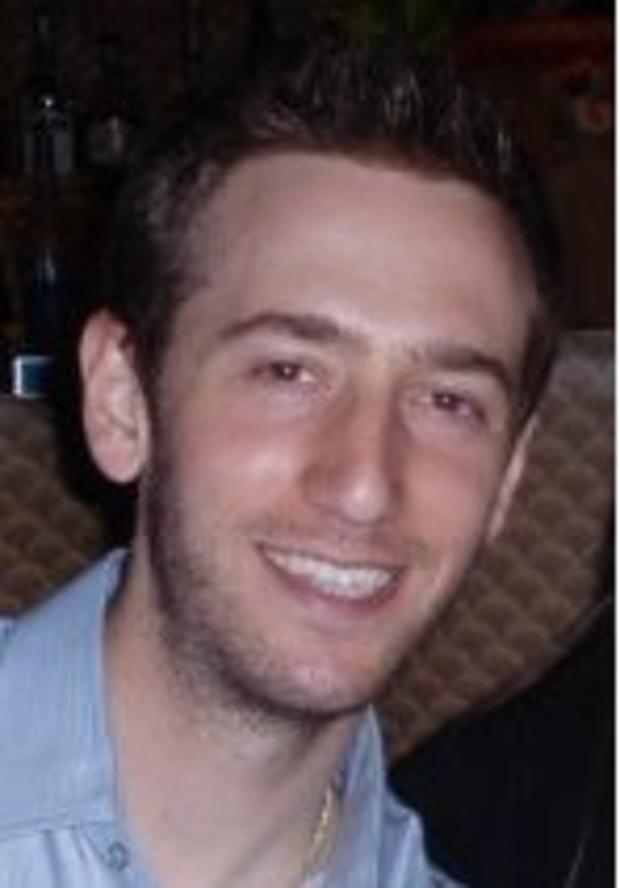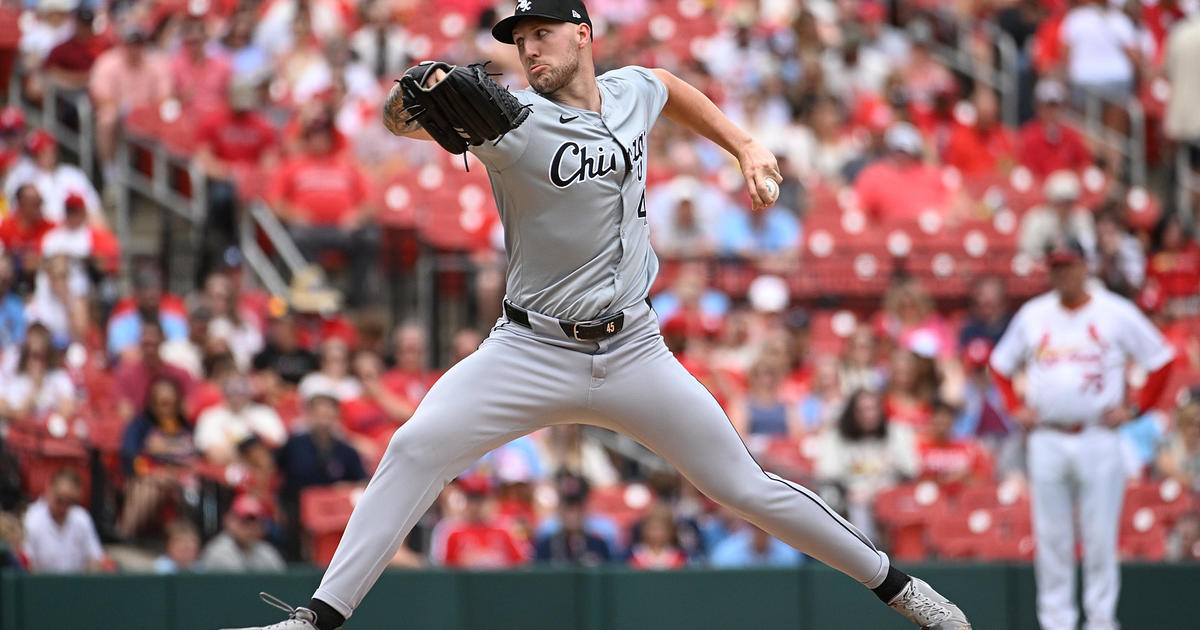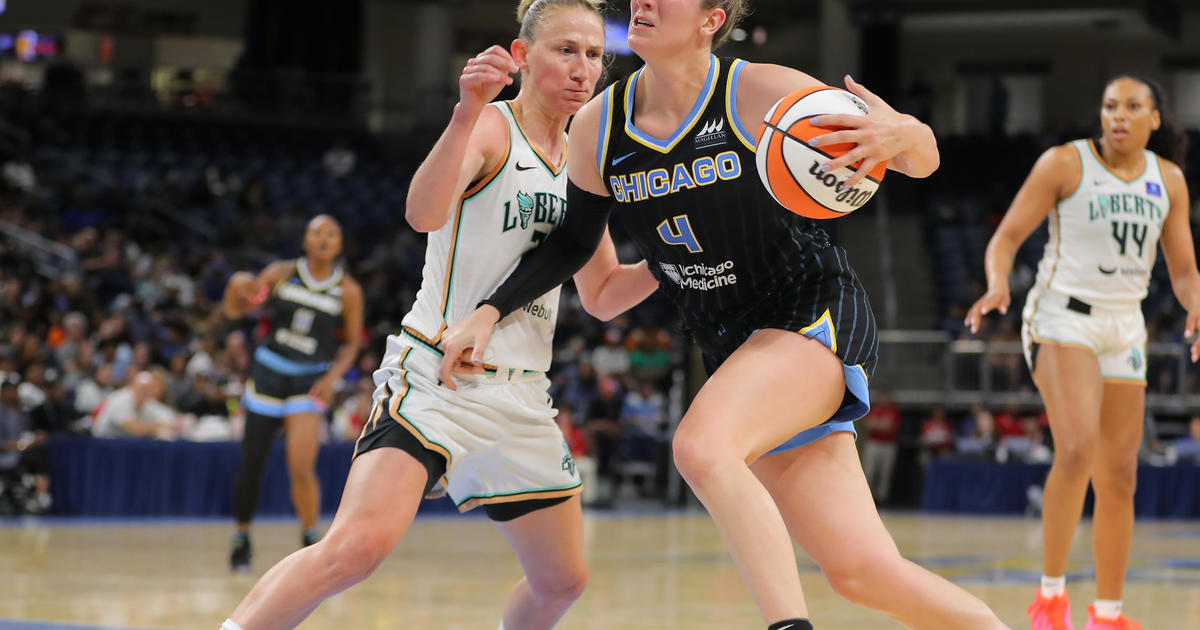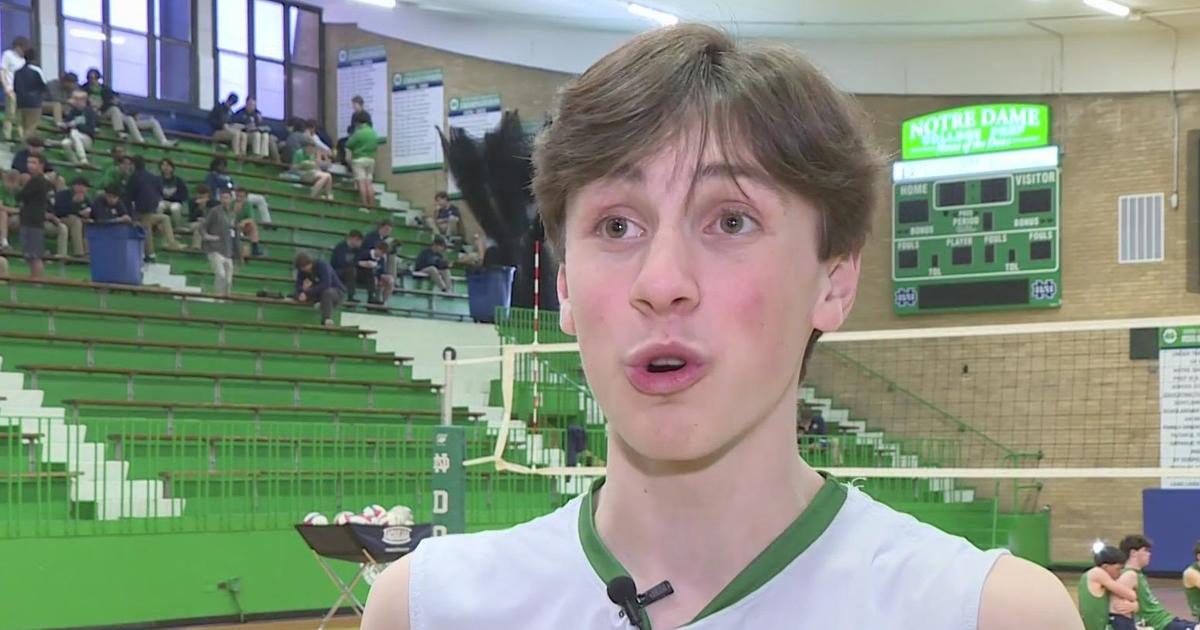Angi: Should The White Sox Sign Granderson?
By Cee Angi-
(CBS) Technically, the Hot Stove League, the five-month interregnum between seasons during which rumors start flying and free agents start signing, doesn't get underway until after someone wins the trophy.
Sometimes though, in cases of great need, the rumors start early – with the 2013 White Sox, it's simultaneously a way of trying to continue the pain of the season beyond its ending and raise hope out of despair. As such, it's not surprising that the White Sox, who could use an upgrade at virtually every position, are already being talked up as buyers in the free agent market.
I have a love-hate relationship with the offseason; it's incredibly hard to parse reality from the rumors as free agents ricochet from purported landing spot to landing spot like pinballs. A lot of the information is false, or at least grossly exaggerated, as teams kick the tires on the best players available and hack columnists analyze the ramifications of the figments conjured by rumor-mongers as if they were fact, while the rumor-mongers themselves stalk general managers much in the same way paparazzi do celebrities.
Over the next few months, you'll hear that the Sox are chasing everyone from Robinson Cano to Brian McCann to Jose Abreu. While the Sox certainly have holes in their roster large enough to house all of those players, expectations should be tempered.
With that disclaimer out of the way, we can feel free to disregard it and turn to the very first White Sox rumor of the offseason: According to Daryl Van Schouwen of the Chicago Sun-Times, the Sox are very interested in 32-year-old free agent outfielder Curtis Granderson.
Granderson would be the first installment of what is, if you're inclined to believe the sound bites, a three-year plan that involves more international spending, the draft, and mid-tier free agents instead of purchasing a team of superstars.
Realistically, they will test the waters on a lot of free agents that they don't end up signing. That's not to say they won't add new talent, because they certainly will, but the prospect of the payroll ballooning north of $100 million in the sake of immediate success just isn't reality.
As the White Sox do make moves this offseason, they are going to be incredibly hard to evaluate without a tinge of cynicism. Every signing must be weighed for impact, and a player like Granderson, whose marquee value as a local product and 10-year major league veteran may exceed his on-field impact, certainly has redeeming soft factors, but from a pure baseball standpoint, it's not the type of move that is going to swing the standings given the magnitude of the team's needs. In other words, Granderson may be a step in the right direction, but if he's the best player the White Sox sign this season, it's going to be another long year.
That's not a problem exclusive to Granderson; the Sox will sign players that will have an impact, sure, but given where they are in the life cycle of team building (somewhere between "glint in your daddy's eye" and a tadpole), many of their offseason moves will not be long-term fixes but short-term patches, placeholders for future stars who in many cases aren't even in the system yet.
Assuming consistency from the pitching staff—a tall order, but not impossible—the Sox will need to add at least 250 runs to be competitive. While it would be nice if the offense could be improved by adding just a player or two, when you consider that even MVP-types like Mike Trout and Miguel Cabrera generated about 150 runs each, and that any player signed by the Sox will produce considerably less than that, it becomes apparent that they aren't going to find that sort of run production in just one offseason or in just a few run-of-the-mill free agents.
At his 2006 best, Granderson created about 130 runs. He also approached that mark in 2011 with the Yankees, but it's possible that those days are behind him. Granderson's season was truncated to just 61 games this season; he suffered two freak injuries—a broken forearm and a broken hand—after being hit by pitches in March and May. He initially hit well upon returning from the second injury in early August, but went cold, along with the rest of the Yankees, in September and hit just .229/.317/.407 with seven home runs overall. There's no reason to believe that he'll have any lingering issues from the injuries he sustained, and it's fair to think that his production in the next couple of seasons will fall somewhere between what he did this year and what he did in 2012, when he hit .232/.319/.492 with 43 home runs.
Granderson would be a good addition for many teams since he's a left-handed slugger, but here's the question: Are you ready for the speedy Adam Dunn? At this stage of his career, Granderson is a lot like the much-maligned all or nothing slugger. This year he struck out once every 3.1 at-bats, the same rate as in 2012, when, all his bones intact, he whiffed 195 times in 596 trips to the plate.
Like Dunn, he makes up for some of those swings and misses with walks and slugging—he's averaged 30 home runs per season in his career—but for a lineup that was in the bottom of the league in on-base percentage this season and struggled to chain up hits for multi-run innings, it's risky to add another low-average hitter that lives and dies by the long ball when Dunn still has another season on his contract.
At new Yankee Stadium, which is a left-handed slugger's dream park, Granderson has hit .254/.342/.523 with a home run every 14.2 at-bats, and .236/.328/.468 with a home run every 18.5 at-bats on the road. The fact that he's kept his slugging up in all kinds of environments is a good thing, but the drop in average is what sticks out. Much like we've seen with Dunn, if Granderson doesn't lower his strikeout rate, there's a valid concern that he won't make enough contact to keep his average above .200.
It's unclear how many years the Sox would offer Granderson, but he's probably on his last season as an everyday center fielder if that – the Yankees had planned to push him to left field in favor of Brett Gardner prior to the injury (he ended up playing a mélange of all three outfield positions due to team need and the presence of Alfonso Soriano).
Granderson's speed and range aren't what they used to be, and his combination of slowing reflexes, shallow positioning, and questionable routes means he's sometimes beat on balls over his head. The Sox had one of their worst defensive seasons this year and center fielder Alejandro De Aza played a large role, but a declining Granderson doesn't seem like much of an upgrade.
There's a chance that they could use Granderson as a designated hitter occasionally or in left field if the decide to shuffle Dayan Viciedo back to the infield, but there may be better defensive candidates that would help the Sox bridge the gap until they know what sort of range they can expect from their developing outfield prospects. And of course playing a corner would put more pressure on Granderson to perform offensively.
With payroll somewhere around $50 million depending where they settle with their arbitration-eligible players, the Sox have some flexibility in what they spend over the next few seasons. There are some clear gaps in Granderson's performance that don't make him a perfect fit for the Sox, but for an organization in flux, there are a variety of other motivators like having an affable veteran presence (Granderson, comfortable with the media and known for his charitable endeavors certainly is that) during the rebuilding years.
The soft factors are what are at play in the Granderson signing, and as with much of the interest in Joe Girardi on the other side of town, there's an element of sentimentality and nostalgia for the hometown guy (especially if it comes with a discount, which Granderson might) at work which comes with the temptation to minimize weaknesses and see a perfect fit where one might not exist.
In a perfect world, the Sox could land Granderson with no more than a two-year offer given the concerns about his defense and his strikeout rate. While he may not be the complete player that they need for the future, he fits well into the vicious cycle of retooling: Weak teams are in need of more talent, but since they can't add all of that talent at once, they need interim talent to provide a boost until the team can get better, even though they are wasting money on free agents in seasons where the team can't compete. Getting someone like Granderson in the short-term is probably better than latching onto a bigger free agent like Jacoby Ellsbury or Shin-Soo Choo until there's a better idea of how quickly the team will bounce back.
That said, the Red Sox showed this year how a team can help speed a turnaround by taking the money that one big free agent might have cost and spreading it around to several mid-range free agents -- Boston spent a total of $47.85 million of their 2013 budget on 2012-2013 free agents David Ross, Koji Uehara, Stephen Drew, Jonny Gomes, Mike Napoli, and Shane Victorino, whereas the Angels will spend $32 million in the fourth year of Josh Hamilton's deal alone – a category Granderson now likely falls into by virtue of his injury-shortened season. Success breeds imitators, which means that despite his degraded performance, the Sox might find themselves with competition for Granderson's services and be forced to offer more years or dollars than he would otherwise command – at which point the Sox will have to overcommit to a player in decline, turning a patch into a permanent fixture. That way lies madness – and more losing.
Cee Angi is a freelance sportswriter, whose work has appeared at Baseball Prospectus, The Platoon Advantage, The Classical, and is currently one of SB Nation's featured columnists covering Major League Baseball. Follow her on Twitter @CeeAngi and read more of her CBS Chicago blog entries here.




